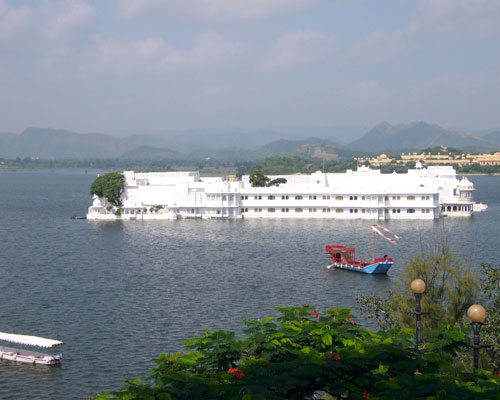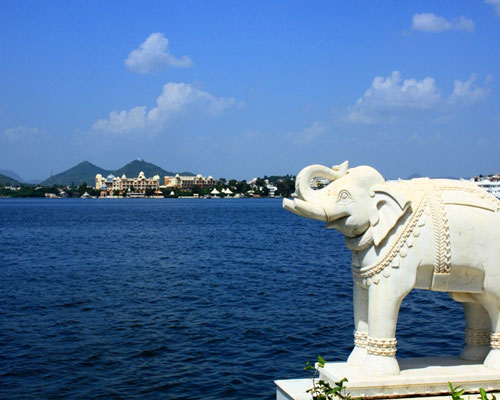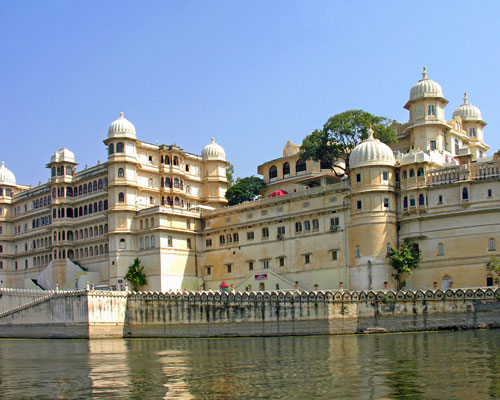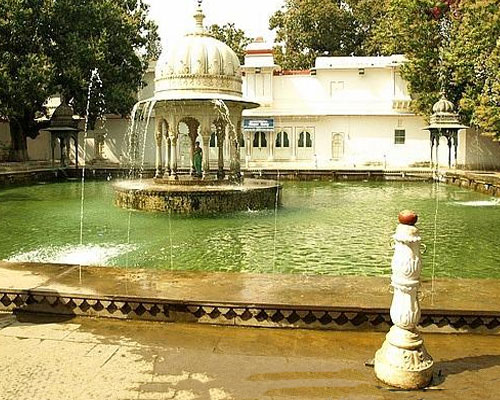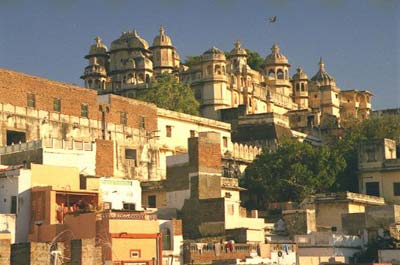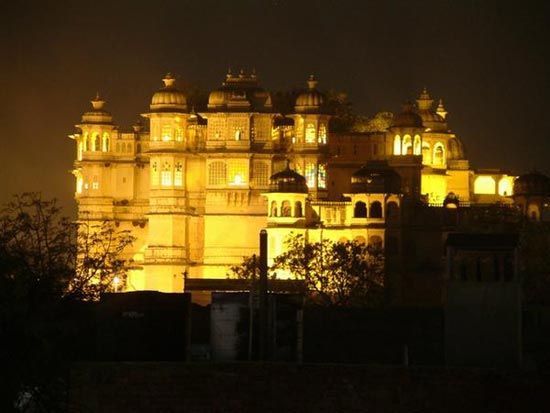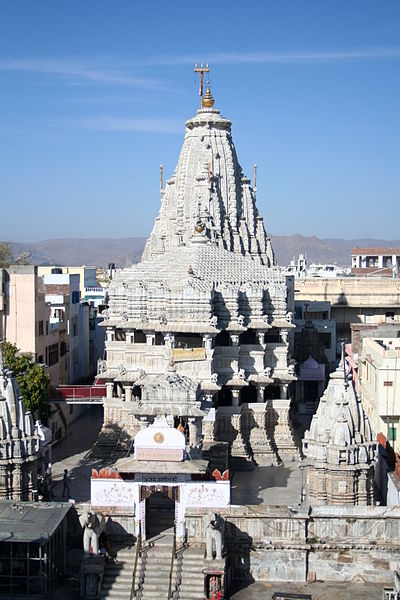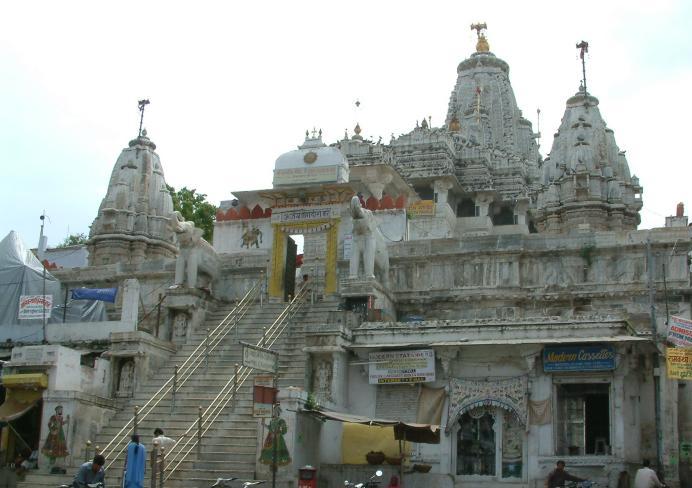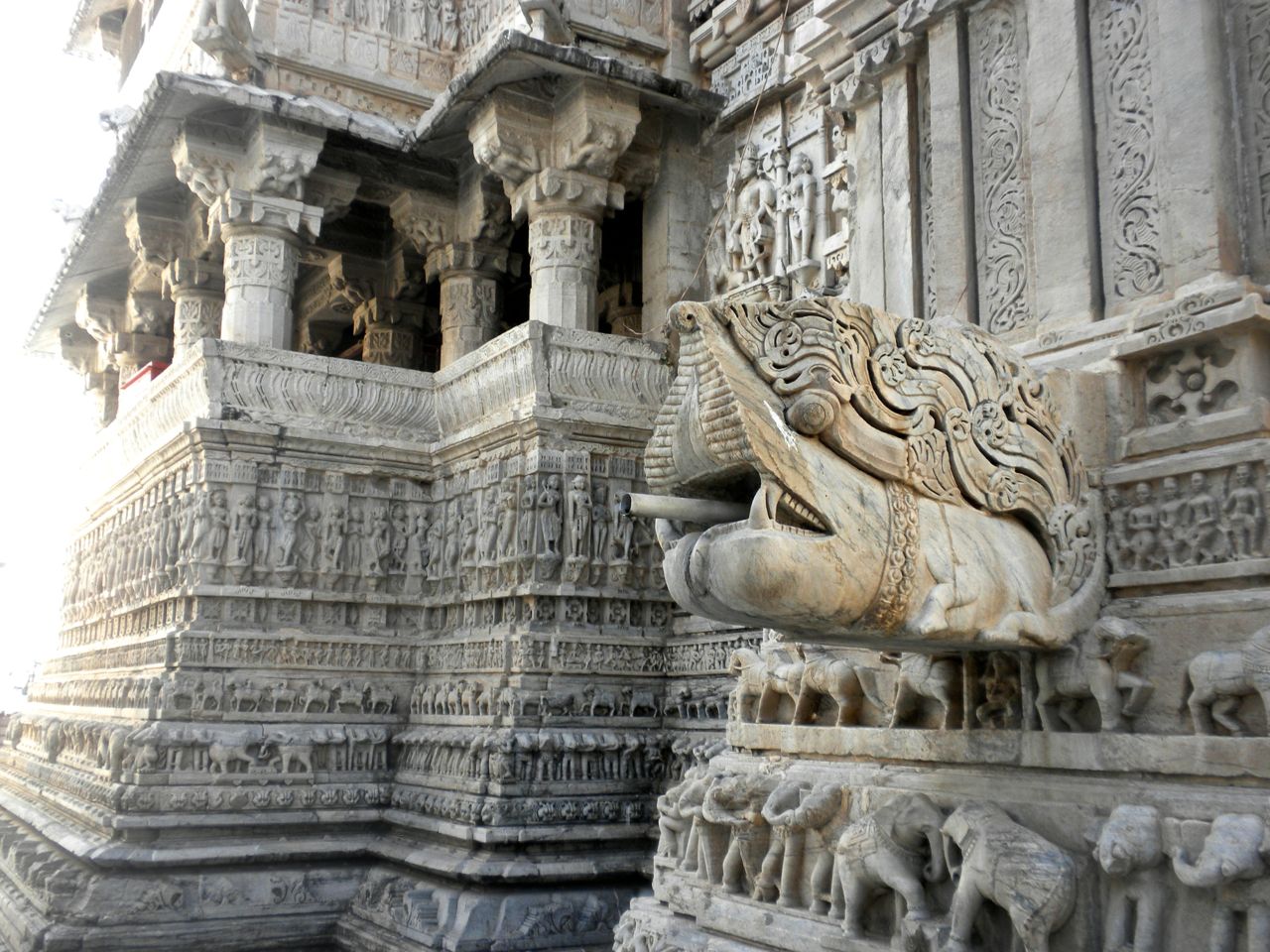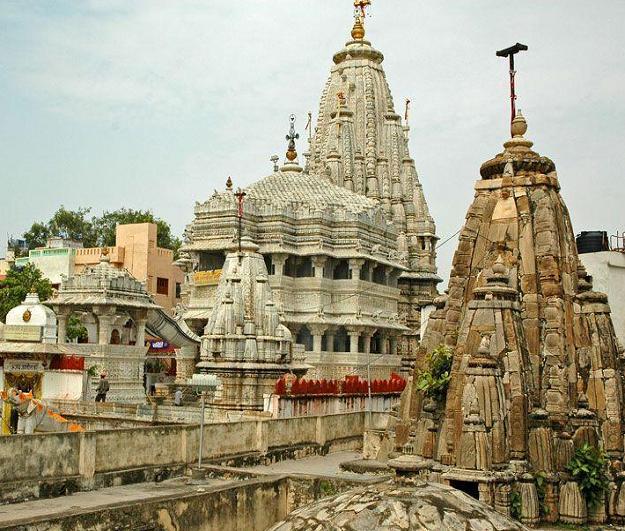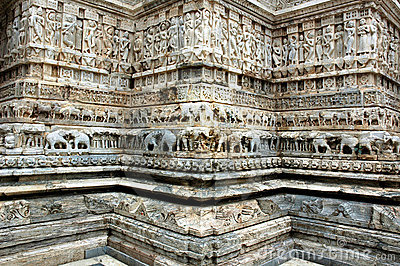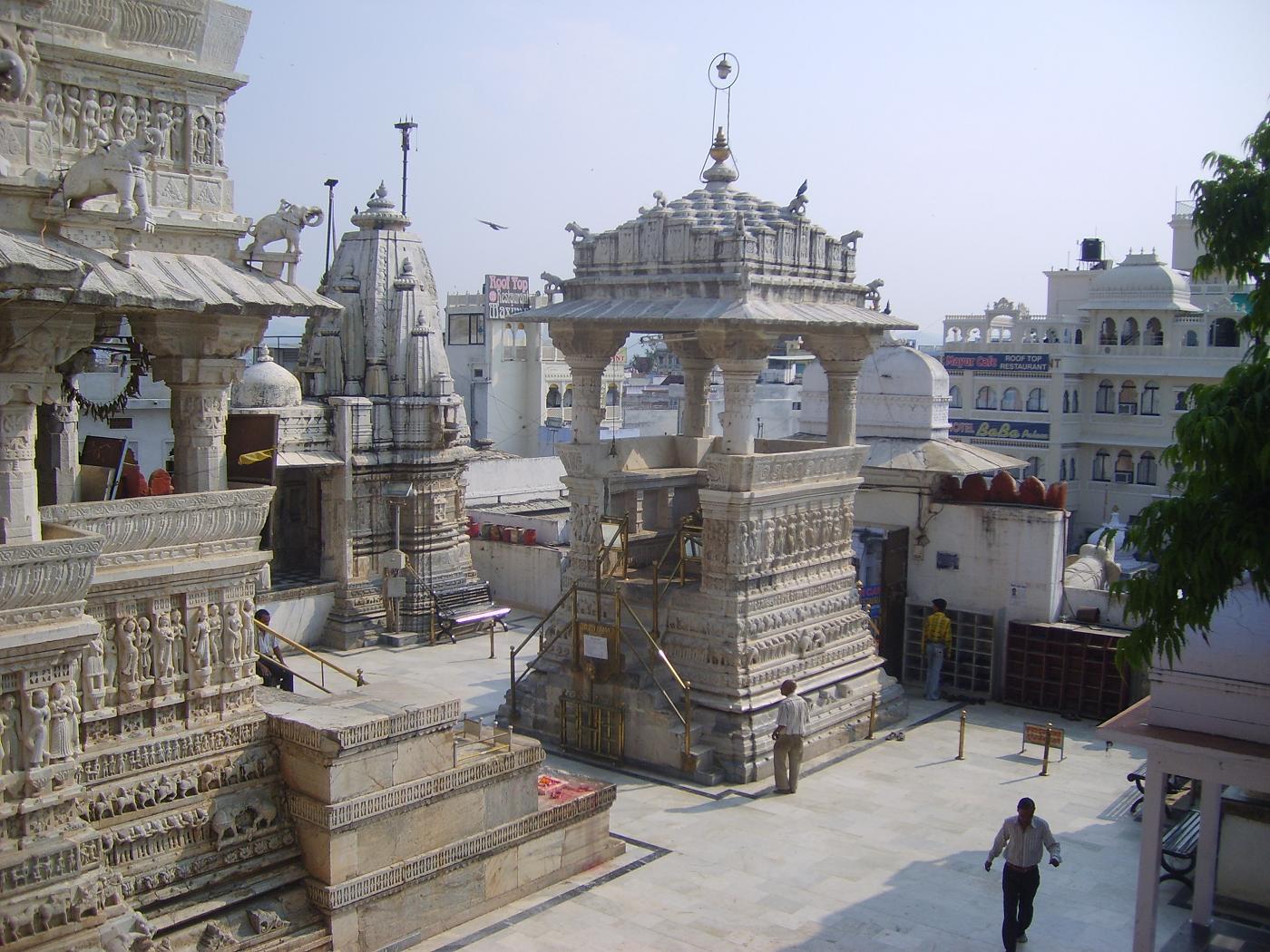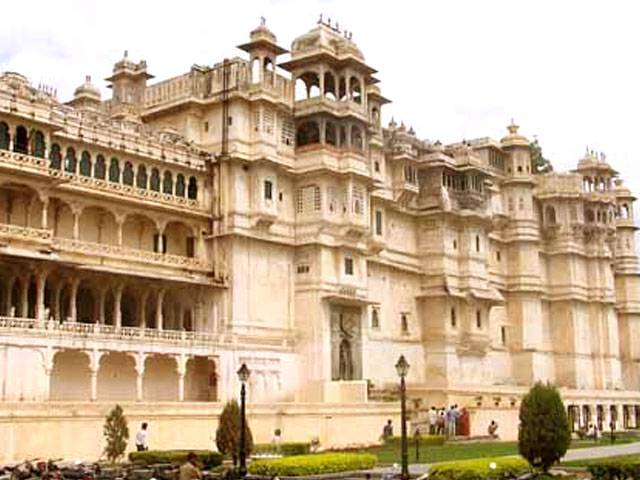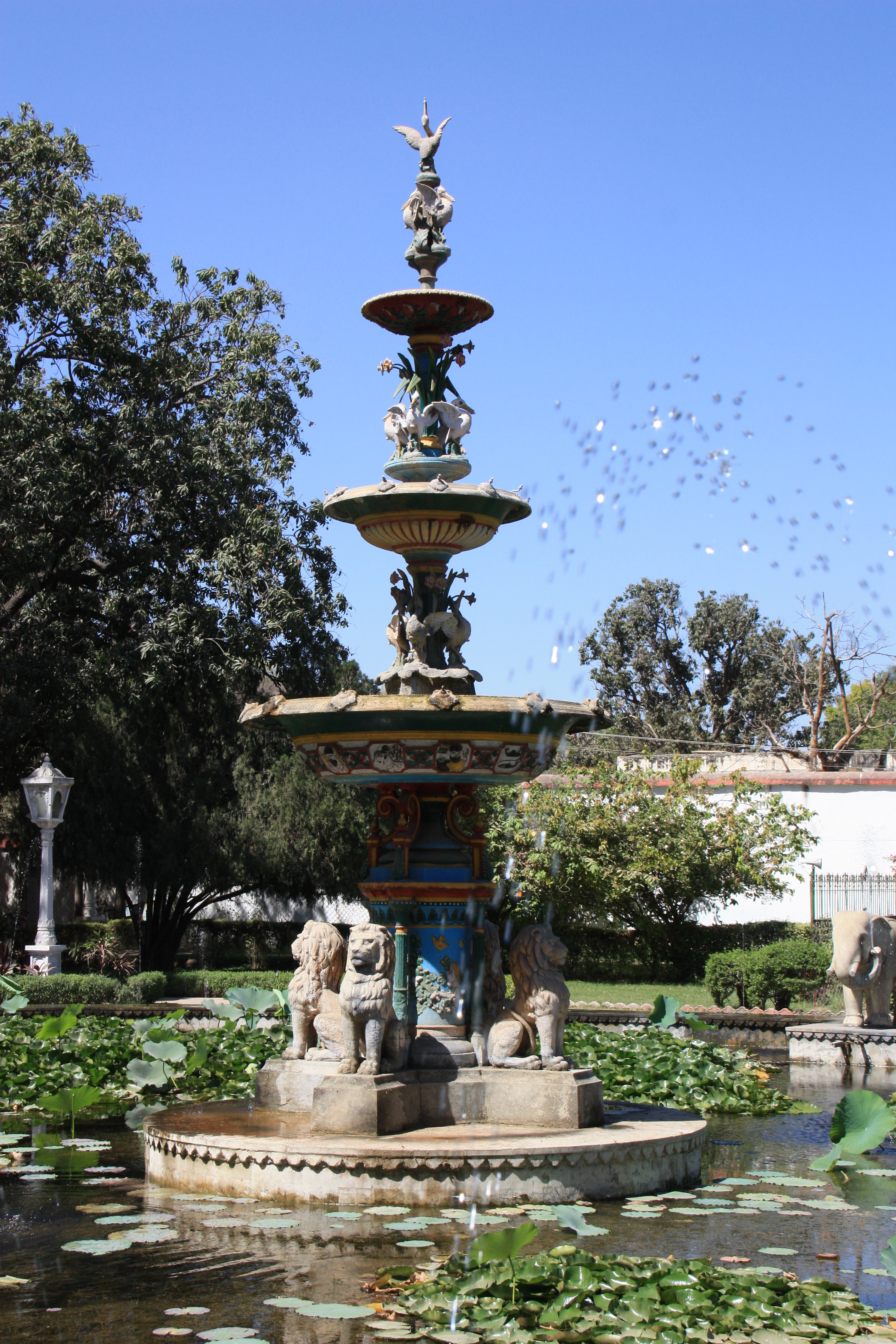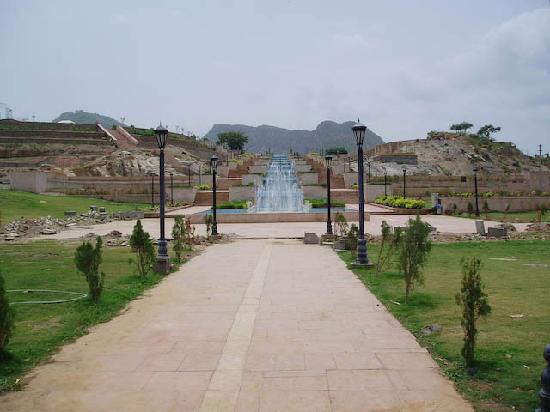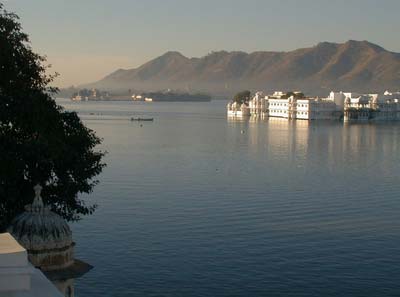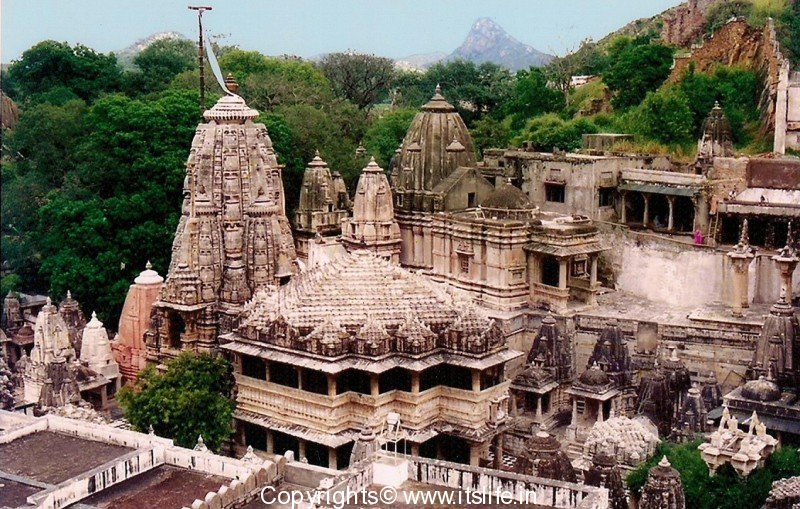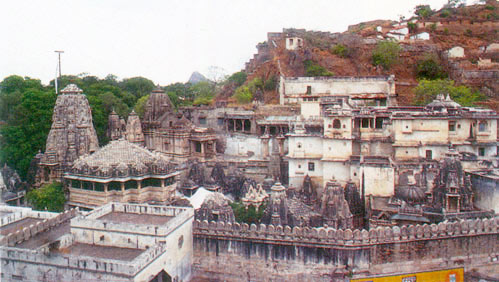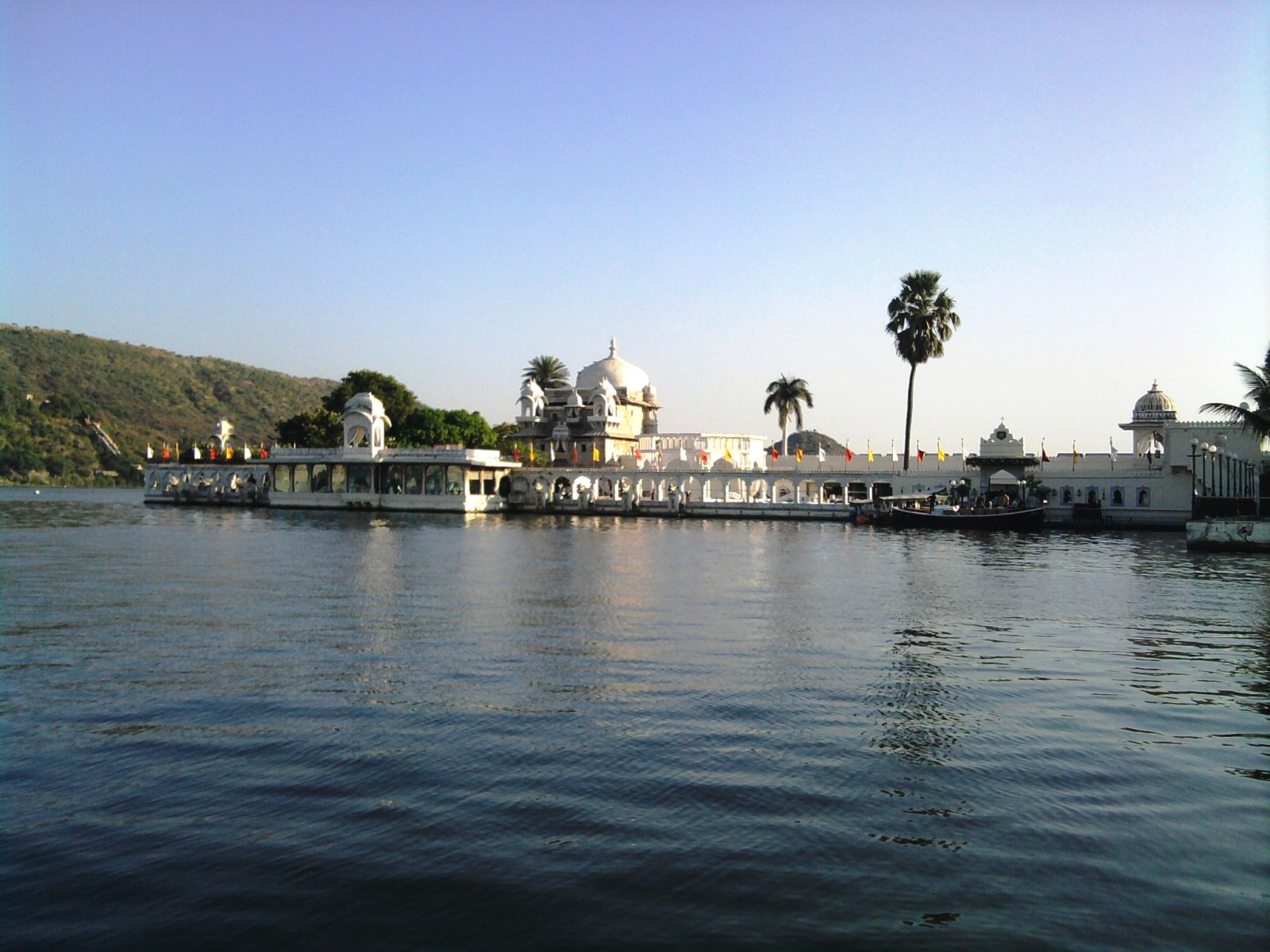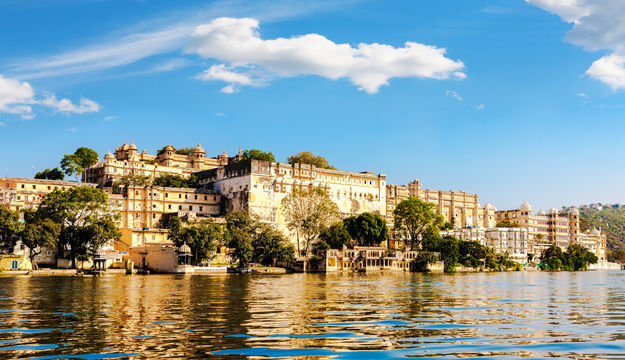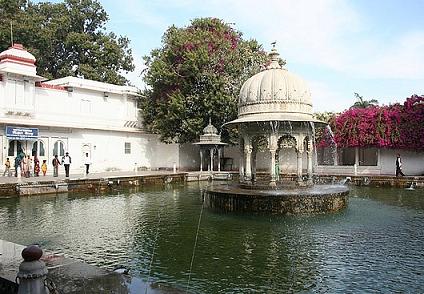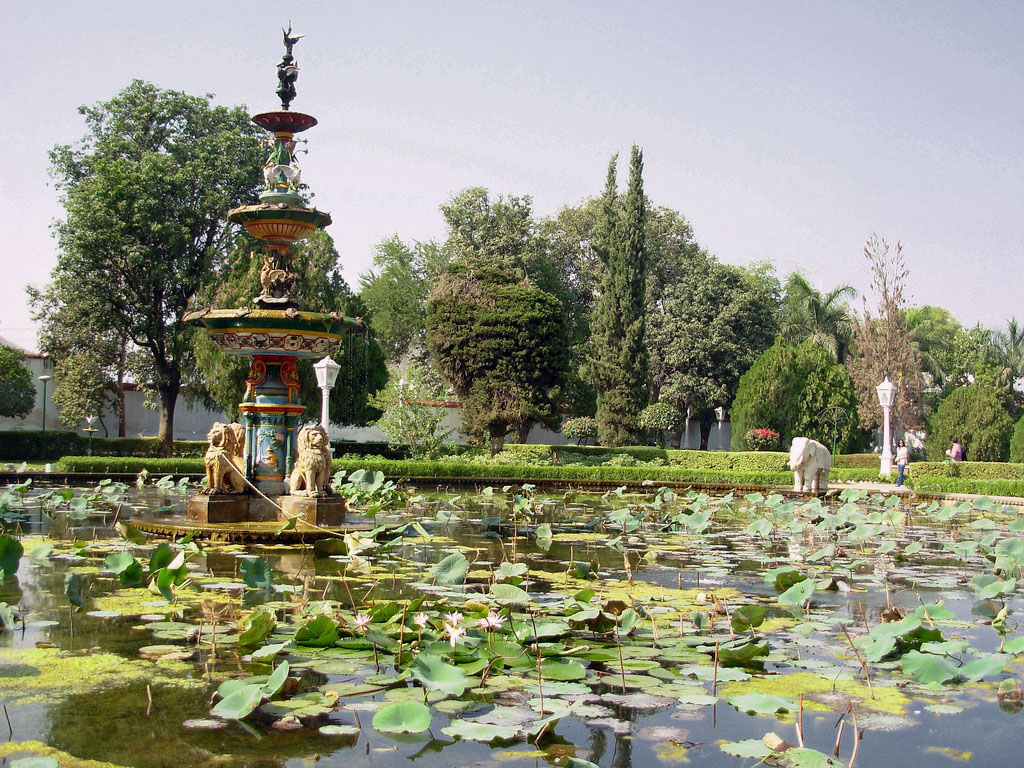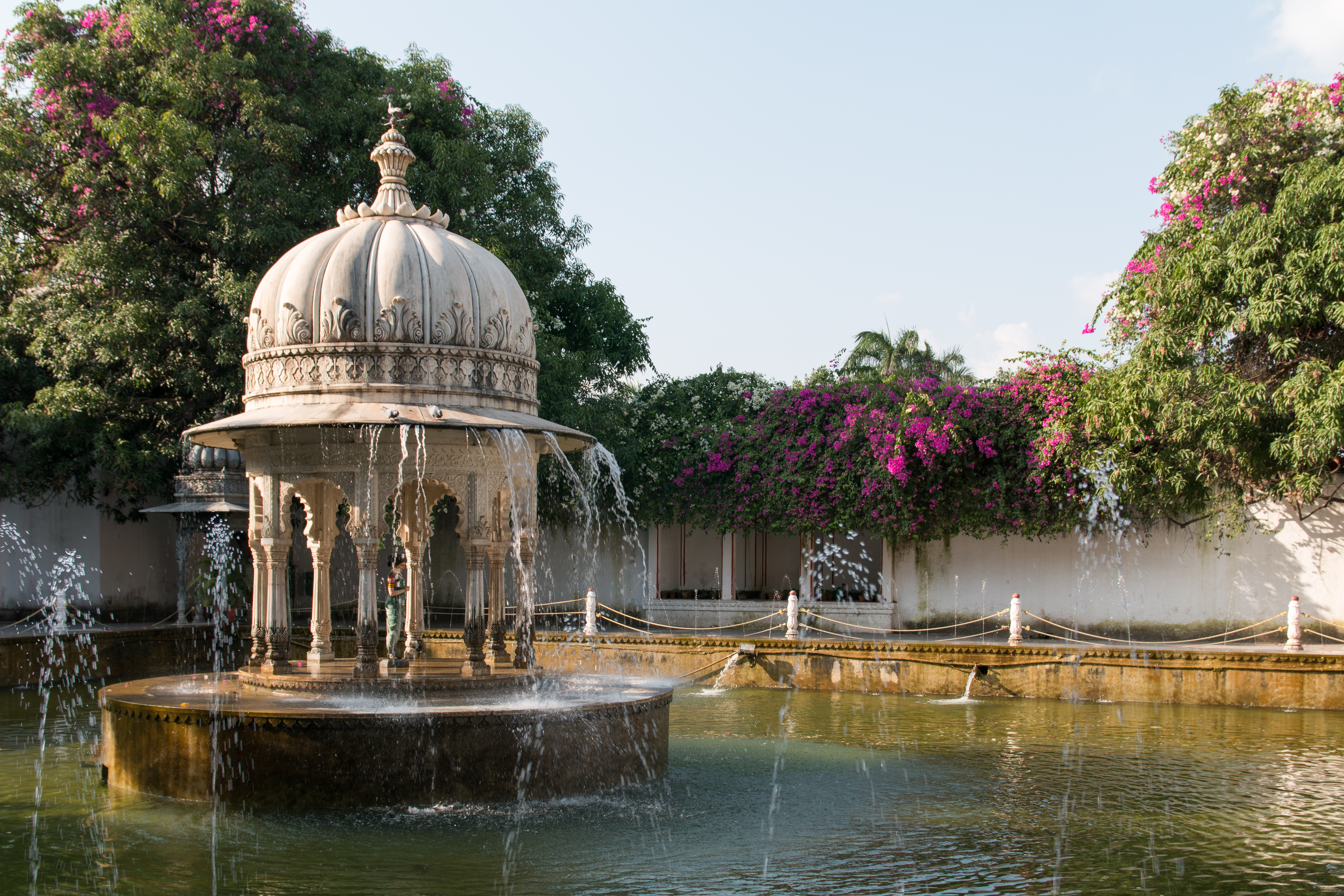Udaipur, The Lake City
General Information
District:UdaipurState:RajasthanCountry:IndiaArea:37 Sq. Km.Language Spoken:Rajasthani, Hindi, EnglishLong Distance Code:+91-7833Importance:Known as the city of LakesBest Time To Visit:September to MarchDescription:
The city of lakes, Udaipur, is perhaps one of the most beautiful and romantic cities of India. In contrast with its desert neighbourhood, it stands out with its enchanting image of white marble palaces, placid blue lakes, gardens, temples surrounded by hills and mountains. It is an oasis of colour in the stark arid region and so indeed is the Venice of east.
Udaipur is the jewel of Mewar, a kingdom ruled by the Sisodia dynasty for 1200 years. It is said that this city was founded by Maharaja Udai Singh at the advice of a hermit whom he met at the lake Pichhola during a hunting expedition. The city was built in 1559 A.D. and was named after Udai Singh. He died in 1572 A.D. He was succeeded by his son Maharana Pratap (1572 - 97), who defended the city from many attacks of the Mughals. After the Mughals it was the Marathas attacked the city. Rana Pratap as he is known, was a great warrior and lived in troubled times.
An end to the bloody battles came with the British intervention in the early 19th century, when a treaty was signed to protect the city from any further attacks. Later, after independence, like all other princely states, Udaipur too became a part of the United India.Location:
Located in the Aravali ranges of Rajasthan, the city of Udaipur is situated at a distance of about405kms from the state capital of Jaipur. The city is well connected by air, rail and road to other important cities of India like Jaipur, Mumbai and Delhi. If Jaipur is study in pink, then Udaipur is vision in white. The city of dawn, surrounded by the ancient Aravali mountains and set on the edge of three lakes, is a brilliant Kaleidoscope of narrow lanes flanked by bright stalls, gardens, lakes, palaces and temples.
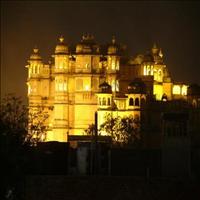 City palace is a complete white structure, standing majestically on a hill and the largest palace complex of Rajasthan. This enormous structure is 30.4 meters in height and 244 meters in length and was started by Udai Singh and subsequently built by later rulers. The entrance to this palace is through Hathi pol or the Elephant gate, along the main street of the old city. The Bara pol or the big gate opens into the first court which leads to the Tripolia gate which has eight carved marble arches.
City palace is a complete white structure, standing majestically on a hill and the largest palace complex of Rajasthan. This enormous structure is 30.4 meters in height and 244 meters in length and was started by Udai Singh and subsequently built by later rulers. The entrance to this palace is through Hathi pol or the Elephant gate, along the main street of the old city. The Bara pol or the big gate opens into the first court which leads to the Tripolia gate which has eight carved marble arches.Then there are series of courtyards overlapping pavilion of terraces, corridors and hanging gardens. There is the Suraj Gokhada, the balcony of the Sun, where the Suryawanshi (sons of the Sun God); Maharanas of Mewar, presented themselves in times of trouble to the people to restore their confidence. The Mor chowk or the peacock courtyard gets its name form the glass decoration it has. The chini chitrashala is noteworthy for its blue and white ceramics, while a series of wall paintings on Lord Krishna are on display in the Bhim Vilas palace.
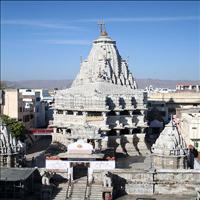 Built in1651 A.D. by Maharana Jagat Singh, this Indo - Aryan temple is the largest and the most beautiful temple of Udaipur with noteworthy sculpted images. Alligators, Elephants, horsemen and celestial musicians are seen on the exterior. It is a gigantic construction and is just like a Hindu iconography school. Temples of Eklingji and Nathdwara are known as the most sacred pilgrims in Mewar.
Built in1651 A.D. by Maharana Jagat Singh, this Indo - Aryan temple is the largest and the most beautiful temple of Udaipur with noteworthy sculpted images. Alligators, Elephants, horsemen and celestial musicians are seen on the exterior. It is a gigantic construction and is just like a Hindu iconography school. Temples of Eklingji and Nathdwara are known as the most sacred pilgrims in Mewar. The crystal gallery located in the Fateh Prakash palace (part of the city palace), was opened to the public in 1994.Overlooking the Durbar hall, the crystal gallery ahs large collection of more than 600 rare objects from all around the world.
The crystal gallery located in the Fateh Prakash palace (part of the city palace), was opened to the public in 1994.Overlooking the Durbar hall, the crystal gallery ahs large collection of more than 600 rare objects from all around the world.Lok Kala Mandal is museum of folk art, which displays the collection of traditional dresses, ornaments, puppets, masks dolls, musical instruments and paintings. There is a section on tribal art. Udaipur's traditional puppets are world famous and still entertain the masses. The museum at Ahar has a varied collection of findings from the excavations at the mound of Dhulkot which is believed to be a 4,000 year old township.
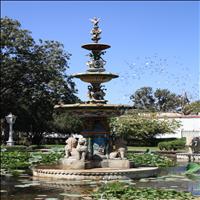 There are two parks in the greenery of the Aravali, M. L. Verma and the Moti Magri parks. Both of them are popular for their sun-set views. Nehru island park is an island in the lake Fateh Sagar. Gulab bagh is a spectacular rose garden laid out by Maharana Sajjan Singh. The garden library houses ancient handwritten manuscripts and books. There is also a small well maintained zoo in the garden.
There are two parks in the greenery of the Aravali, M. L. Verma and the Moti Magri parks. Both of them are popular for their sun-set views. Nehru island park is an island in the lake Fateh Sagar. Gulab bagh is a spectacular rose garden laid out by Maharana Sajjan Singh. The garden library houses ancient handwritten manuscripts and books. There is also a small well maintained zoo in the garden. Saheliyon ki bari was constructed mainly for the maids and female companions of the princesses of the palace. This garden has many fountains in its four pools, chiseled kiosks and marble elephants.
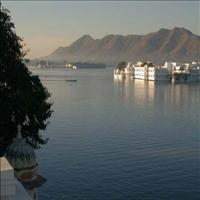 Aptly called the city of lakes, Udaipur is adorned by five beautiful lakes, namely, Fateh Sagar, Lake Pichhola, Udai Sagar, Swaroop Sagar and Badi lake, right in the heart of the city along with numerous others like the Jaisamand, Asia's largest artificial lake, the Rajasmand and the Bagdada lake.
Aptly called the city of lakes, Udaipur is adorned by five beautiful lakes, namely, Fateh Sagar, Lake Pichhola, Udai Sagar, Swaroop Sagar and Badi lake, right in the heart of the city along with numerous others like the Jaisamand, Asia's largest artificial lake, the Rajasmand and the Bagdada lake.Fateh Sagar is a beautiful lake and has hills on its three sides and Pratap memorial built by Maharana Fateh Singh in the fourth side. An island garden in this lake is accessible by boat ride.
The Pichhola lake is a picturesque lake which entranced Maharaja Udai Singh. He also enlarged it later. The lake is surrounded by hills, palaces, temples and bathing ghats. Two island palaces, the Jag mandir and the Jag Niwas (the famous lake palace) are of breathtaking magnificence.
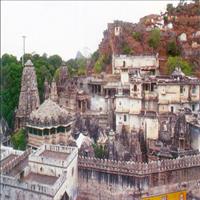 Eklingji is a Hindu temple complex in Udaipur District of Rajasthan in western India. Eklingji is believed to be the ruling deity of Mewar Princely State and the Ruler Maharana rules as his Dewan. About 1 km from Eklingji, Nagda town is famous for its Sahasra Bahu Temples and Adbudji temples. The Sas-Bahu Temple is widely known for its exquisite stone carvings, which are related to incidents in the great Indian epic the Ramayana.
Eklingji is a Hindu temple complex in Udaipur District of Rajasthan in western India. Eklingji is believed to be the ruling deity of Mewar Princely State and the Ruler Maharana rules as his Dewan. About 1 km from Eklingji, Nagda town is famous for its Sahasra Bahu Temples and Adbudji temples. The Sas-Bahu Temple is widely known for its exquisite stone carvings, which are related to incidents in the great Indian epic the Ramayana.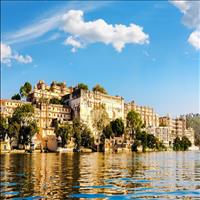 Lake Pichola, situated in Udaipur city in the Indian state of Rajasthan, is an artificial fresh water lake, created in the year 1362 AD, named after the nearby Picholi village. It is one of the several contiguous lakes, and developed over the last few centuries in and around the famous Udaipur city. The lakes around Udaipur were primarily created by building dams to meet the drinking water and irrigation needs of the city and its neighborhood. Two islands, Jag Niwas and Jag Mandir are located within Pichola Lake, and have been developed with several palaces to provide views of the lake.
Lake Pichola, situated in Udaipur city in the Indian state of Rajasthan, is an artificial fresh water lake, created in the year 1362 AD, named after the nearby Picholi village. It is one of the several contiguous lakes, and developed over the last few centuries in and around the famous Udaipur city. The lakes around Udaipur were primarily created by building dams to meet the drinking water and irrigation needs of the city and its neighborhood. Two islands, Jag Niwas and Jag Mandir are located within Pichola Lake, and have been developed with several palaces to provide views of the lake.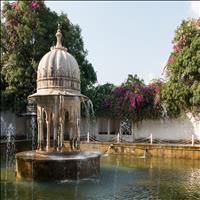 Saheliyon-ki-Bari (Courtyard of the Maidens) is a major garden and a popular tourist space in Udaipur in Indian state of Rajasthan. It lies in northern part of the city and has fountains and kiosks, a lotus pool and marble elephants. It was built by Rana sangram Singh. Saheliyon ki Bari means Garden of the Maidens. There is also a small museum here.
Saheliyon-ki-Bari (Courtyard of the Maidens) is a major garden and a popular tourist space in Udaipur in Indian state of Rajasthan. It lies in northern part of the city and has fountains and kiosks, a lotus pool and marble elephants. It was built by Rana sangram Singh. Saheliyon ki Bari means Garden of the Maidens. There is also a small museum here.Timings: 10:00 am – 4:00 pm

